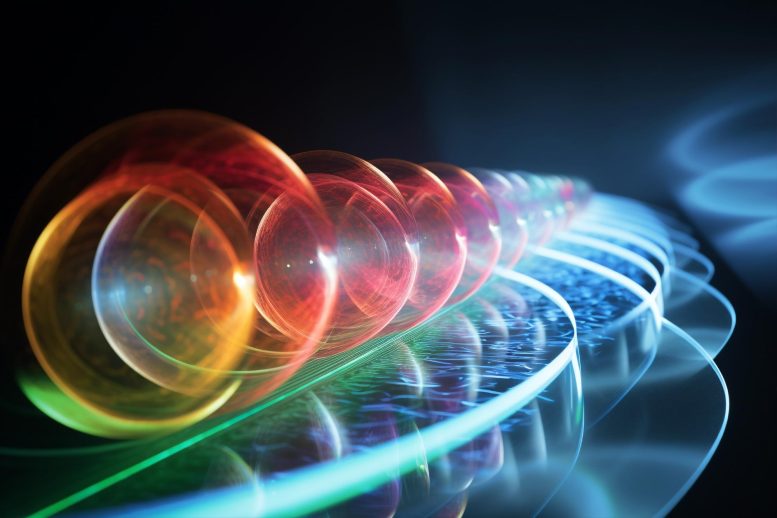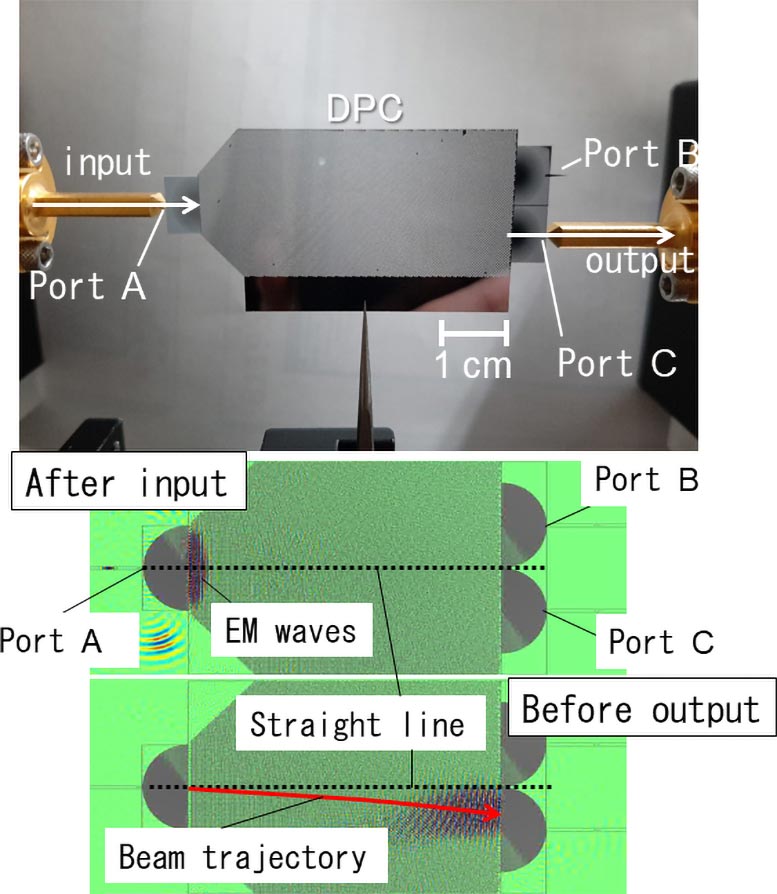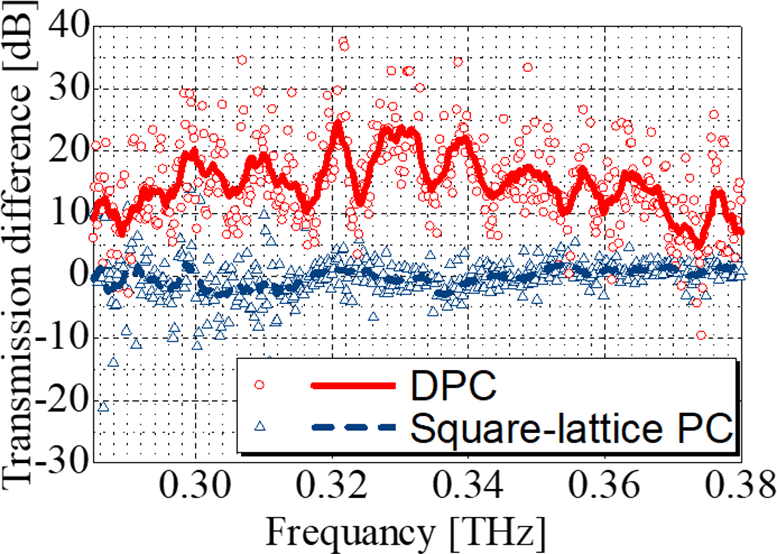
Scientists manipulated light to behave as if influenced by gravity using distorted photonic crystals, opening avenues for optics advancements and 6G communication.
Manipulating Light’s Behavior With Pseudogravity
A collaborative group of researchers has manipulated the behavior of light as if it were under the influence of gravity. The findings, which were published in the journal Physical Review A on September 28, 2023, have far-reaching implications for the world of optics and materials science, and bear significance for the development of 6G communications.

Einstein’s Theory and Pseudogravity
Albert Einstein’s theory of relativity has long established that the trajectory of electromagnetic waves — including light and terahertz electromagnetic waves — can be deflected by gravitational fields. Scientists have recently theoretically predicted that replicating the effects of gravity — i.e., pseudogravity — is possible by deforming crystals in the lower normalized energy (or frequency) region.
“We set out to explore whether lattice distortion in photonic crystals can produce pseudogravity effects,” said Professor Kyoko Kitamura from Tohoku University’s Graduate School of Engineering.

The Role of Photonic Crystals
Photonic crystals possess unique properties that enable scientists to manipulate and control the behavior of light, serving as ‘traffic controllers’ for light within crystals. They are constructed by periodically arranging two or more different materials with varying abilities to interact with and slow down light in a regular, repeating pattern. Furthermore, pseudogravity effects due to adiabatic changes have been observed in photonic crystals.
Kitamura and her colleagues modified photonic crystals by introducing lattice distortion: gradual deformation of the regular spacing of elements, which disrupted the grid-like pattern of protonic crystals. This manipulated the photonic band structure of the crystals, resulting in a curved beam trajectory in-medium — just like a light-ray passing by a massive celestial body such as a black hole.

Experiment Details and Implications
Specifically, for their experiment, the scientists employed a silicon distorted photonic crystal with a primal lattice constant of 200 micrometers and terahertz waves. Experiments successfully demonstrated the deflection of these waves.
“Much like gravity bends the trajectory of objects, we came up with a means to bend light within certain materials,” adds Kitamura. “Such in-plane beam steering within the terahertz range could be harnessed in 6G communication. Academically, the findings show that photonic crystals could harness gravitational effects, opening new pathways within the field of graviton physics,” said Associate Professor Masayuki Fujita from Osaka University.
Reference: “Deflection of electromagnetic waves by pseudogravity in distorted photonic crystals” by Kanji Nanjyo, Yuki Kawamoto, Hitoshi Kitagawa, Daniel Headland, Masayuki Fujita and Kyoko Kitamura, 28 September 2023, Physical Review A.
DOI: 10.1103/PhysRevA.108.033522
Never miss a breakthrough: Join the SciTechDaily newsletter.
2 Comments
If scientists came up with a solution to artificially bend light, is it possible that – in one form or another – this artificial light bending can occur in space (between us and a light source – like a galaxy). Then some of the gravitational distortions we observe could be addressed to this kind of light bending, giving new possibilities as to how study and analyze the universe we see?
How is this in-medium effect different from material refraction performed with microscopic control over the medium?